Blogs
The different parts of a knife: Anatomy of a kitchen knife
|
We cut things with kitchen knives every day , but do we really understand kitchen knives ?
Today, you are here to follow in my footsteps, and I will take you to re-recognize the chopper in your hand .
A first glance , a kitchen knife seems like a relatively simple thing , but they are actually deceptively complicated.
Even a standard chef’s knife has up to ten separate sections to it , and their design can have a massive effect on how the blade handles and what it is used for .
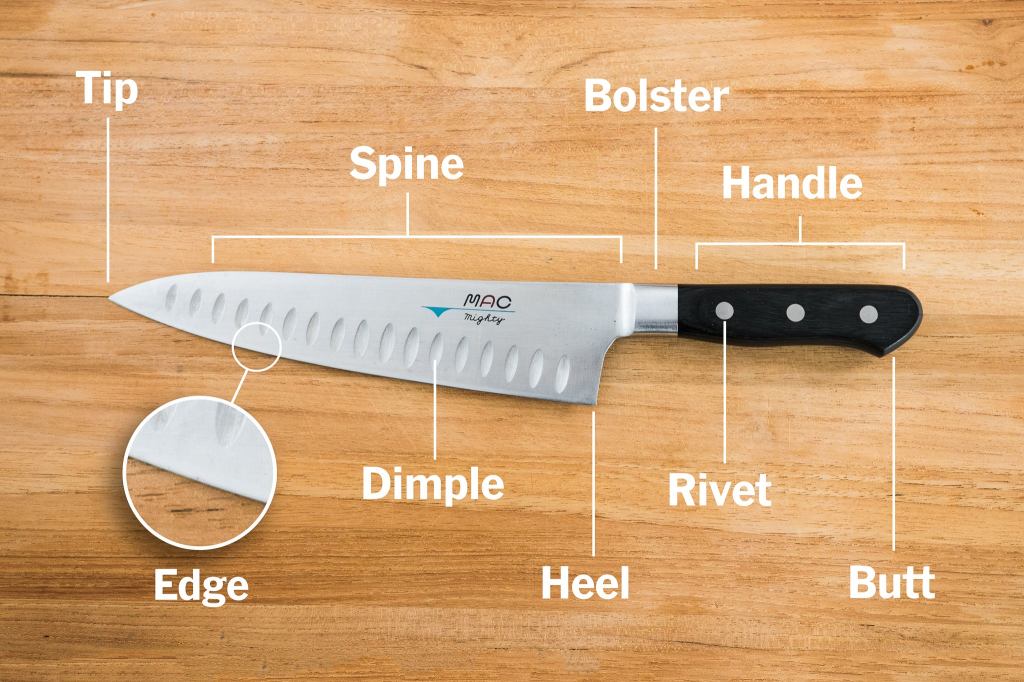
If you want to find the best-quality knife for a particular task , it will help to have a basic working knowledge of the different parts of a knife . Here, we’ll explain what each part of a knife is called , and what function it serves . You should note that this is just an overview of the different features you will see on most basic knives : many specialist knives may be constructed slightly differently .
Blade
The blade is actually comprised of many parts and runs from the bolster to the tip, all of which we’ll cover further down.
In a nutshell, this is the business end of the knife. There are several blade types to be familiar with:
Straight Edge / Flat Ground
The simplest and most common knife-edge, it relies on being kept sharp and clean to do its job with maximum efficiency.
Hollow Ground
These blades are ground deep to leave concave sides and a very thin, fragile edge. Knives for fine or delicate work are often ground this way.
Serrated
Jagged edged, or serrated, knives feel very rough to the touch, and the serrations are clearly visible to the unaided eye.
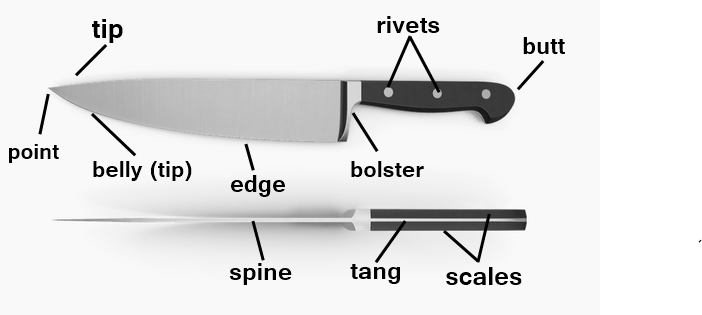
Scalloped
A scalloped blade has many, widely separated points connected by arches in the edge. Blades like this are able to grab hold of an otherwise unyielding surface and force their way through. A bread knife is typically scalloped, as are some of the best knives used for slicing brisket.
Edge
The edge is the actual working part of a knife. Edges can be ground to different profiles , depending on what the knife is intended to be used for . An edge can be Chisel , Hollow-Ground , V , or Flat-Ground , Convex , Compound , or Serrated . Some edges can even have multiple bevels, such as half Hollow-Ground and half Serrated. The edge can be critical , depending on what the knife is used for. Hollow-Ground will give you a very fine, super-sharp edge, but it will be somewhat delicate , and will not stand up to heavy chopping, and batoning (batoning is hammering the blade through something with another object, such as a large stick, or polymer hammer…very hard on edges, and spines…) . Hollow-Grinds are found on many fine chefs knives, slicing and boning knives, fillet knives and pocket knives. A ‘V’ , or Flat Ground edge will be tough, and is great for chopping and batoning. It will hold an acceptable edge for most tasks, but will not take a super-fine edge for very clean slicing. You’ll see Flat Grinds on Meat Cleavers , Axes and Machetes . Chisel points are used mostly on tools . Convex , and Compound grinds are a compromise between hollow-grinds and Flat grinds. Serrated edges are common on many kitchen knives, and have great shearing power for making clean cuts through tough materials, like seat belts, gristle, and such. Some knives may even have the first half of the blade as a Hollow grind, and the last half of the blade with a Serrated grind. Some people like this combination.
The spine and the heel
The spine of the knife is the unsharpened back of the blade. Having an unsharpened spine is what separates a knife from a dagger, which has an edge on each side.
The weight of the spine contributes to how delicately you can use the knife. A knife with a heavy blade is more suited for hard chopping while a knife with the weight concentrated in the handle is easier to make fine cuts with.
The heel of a knife is the widest part of the spine that usually sits just in front of the handle.
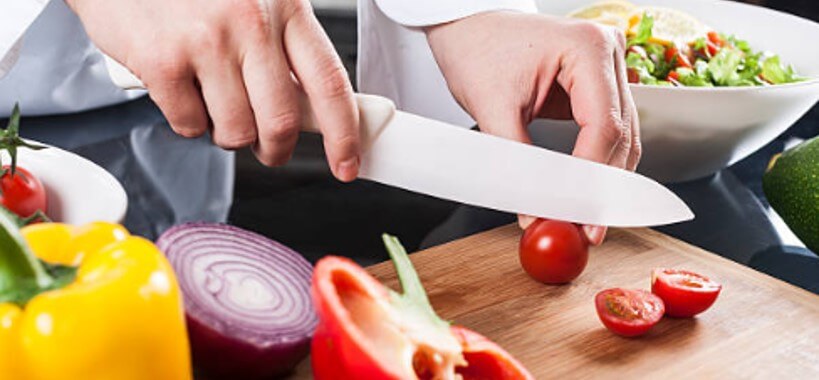
Bolster
The bolster serves the dual purpose of strengthening the part of the knife where the blade meets the handle and also providing a small guard that stops you hand from slipping forward onto the edge .
A bolster is important on knives used for chopping raw meat or filleting fish as it can be pushed down on for extra leverage and helps to stop the blade slipping if your hands get slimy .
This is a crosspiece that protects the fingers from opposing blades sliding down your blade on a parry , during a knife-fight , or , in the case of kitchen knives , keeps your hand from sliding down onto the blade if your hand gets slippery .
Scales (handle)
The handle of the knife. Scales can be made from many materials, such as micarta, abalone, turquoise, various kinds of wood, plastic, rubber, leather, and polymers. The design of a handle can effect the ease with which a knife can be used for a specific purpose. A handle can be straight, or have finger grooves.
The handle fasteners
Handle fasteners tend to come in one of two types:
Screws – Screws need to checked and tightened regularly, as they will come loose during use. The benefit of having screws as handle fasteners is that it makes it easy to replace the handle of a knife when if it wears out.
Rivets – Rivets tend to be a more cost-effective handle fastening and, while they don’t come loose during use in the same way as screws, they make replacing a handle a lot more complicated.
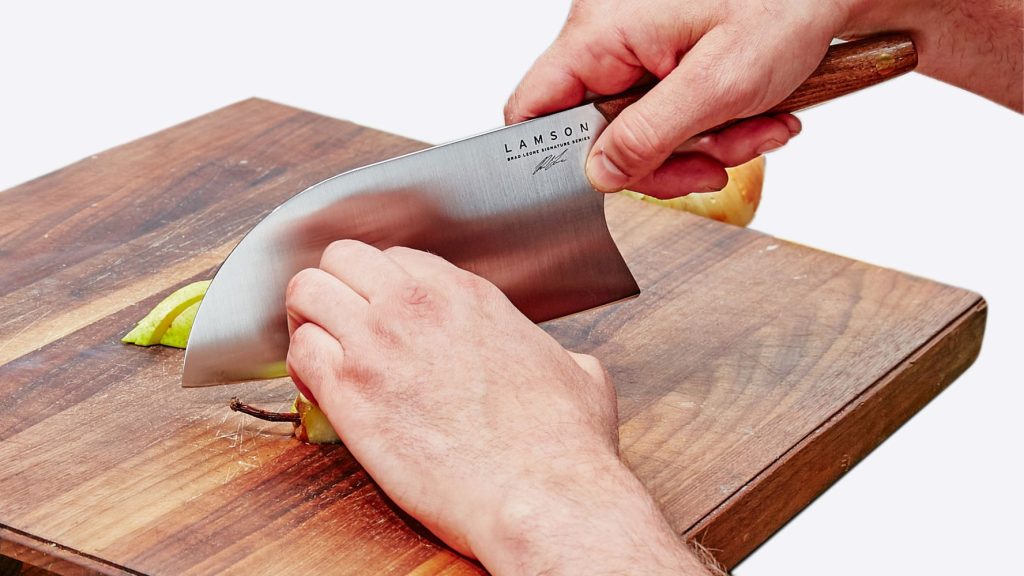
Tang
The tang is the unsharpened metal at the end of the blade that the handle attaches to. The tang can be a full-tang, meaning the metal extends all the way to the end of the scales, or a partial tang, meaning the metal only extends part of the way into the scales. Full tang knives allow much more force to be applied to the blade, and are the preferred style for most types of knives. The exception to the rule is folding knives, which by design, are impossible to make with a full-tang.
The butt
The butt of the knife is the end of the handle, furthest away from the point. The butt is often curved, so the user knows the orientation of the blade by feel. If the tang sticks out of the back of the handle, this is sometimes referred to as a pommel instead of a butt.
If you want to find a kitchen knife, come to YierCity
Why choose YIERCITY
We do professional knife set retail and wholesale business. We hope to be your stable global supporter and partner.
We are an enterprise integrating factory and trade, specializing in the design, manufacture and sales of high-quality knife sets.
We always make every effort to ensure the quality of each set of knives.
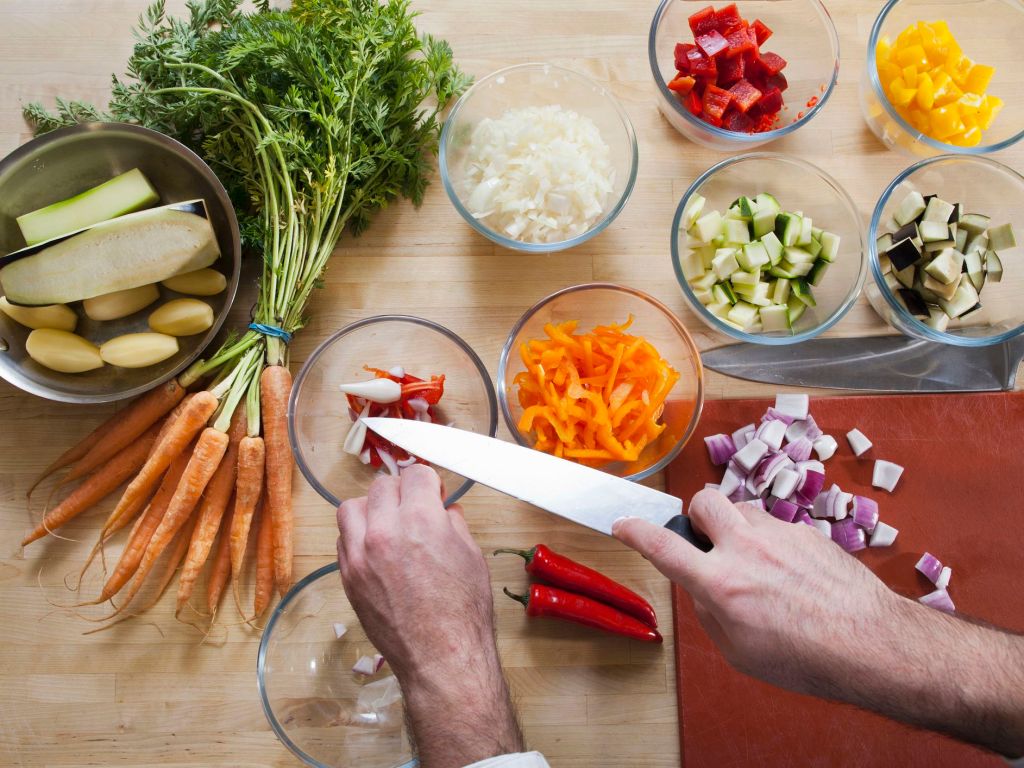
Why choose YIER Knives
● The complete knife set contains all kitchen knives.
● Delivery from the local warehouse, within 3 days.
● Manufactured in our own factory, cost-effective.
● Transparent acrylic knife holder, like a work of art
● Excellent materials, safe and durable.
● Free returns
● We listen to customer needs and feedback.